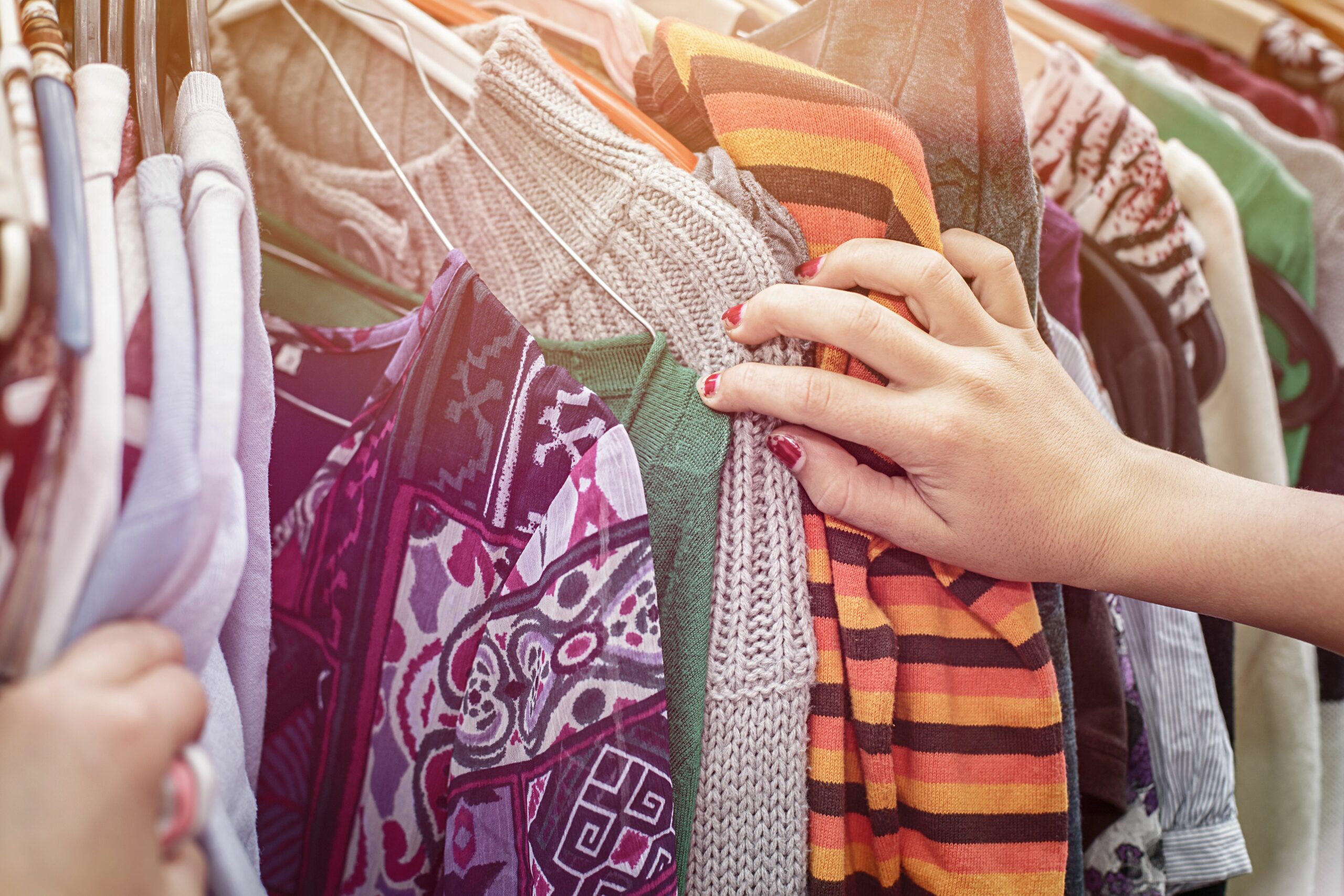
narimbur/Depositphotos.com
October 20, 2025
Has Pre-Loved Gifting Become Totally Acceptable?
ThredUp’s 2025 Holiday Report found U.S. consumers plan to dedicate nearly 40% of their total holiday budgets to secondhand gifts, up from the 30% they typically spend on resale in their everyday shopping.
Much as past surveys show, the top reason for purchasing resale product was to save money — and other surveys are showing holiday shoppers seeking out discounts this year amid concerns over the economy and tariff-related price hikes. The online resale platform’s survey found over half of shoppers (52%) are more likely to focus on getting more items for less money this year.
However, one popularity driver of secondhand gifting also appears to be to find something special. ThredUp’s survey found a second reason to purchase secondhand was finding unique, one-of-a-kind items, cited by 56% of respondents, just behind saving money/better value (62%).
The top secondhand categories shoppers are considering buying as gifts this year are: accessories (e.g., handbags, jewelry, scarves), cited by 40%; women’s apparel (e.g., coats, knits, denim)at 36%; and vintage items (across apparel, accessories, and home), at 31%.
Secondhand Gifting Could Be Gaining Steam
A study last year from ThredUp competitor OfferUp found 74% of U.S. shoppers feeling that giving secondhand gifts has become more accepted over the past year, a 7% increase from the year before.
OfferUp found that 68% of shoppers (83% among Gen-Zers) planned to set aside part of their holiday budget for pre-owned items. Inflation was the top factor making respondents more likely to choose secondhand gifts. However, while 48% believe these resale gifts offer better value for their money, 40% appreciate the unique options available on resale platforms, and 31% enjoy the thrill of searching for that perfect find.
Overall, OfferUp’s survey found 83% of shoppers are open to receiving secondhand gifts this holiday season, reflecting a growing comfort with pre-loved items. The most popular secondhand categories were electronics, cited by 55%; sporting goods, 47%; and furniture, 42%.
With traditional retailers largely focused on selling new merchandise, the main beneficiaries of any surge in secondhand gifting this holiday season will likely include eBay, the world’s largest secondhand marketplace; other resale platforms that also include Poshmark, The RealReal, and GOAT; Facebook Marketplace, and thrift stores.
Amazon operates an Amazon Resale platform selling used, pre-owned, or open-box products. Walmart last year introduced “Resold at Walmart,” enabling sales of used items from third-party sellers, and has also partnered with ThredUp and Rebag to support pre-owned sales. ThredUp’s partnerships also include Target, Macy’s, and American Eagle.
Urban Outfitters is one of the few seemingly finding success in resale with strong growth for its Nuuly platform, a subscription-based rental service and a separate resale marketplace.
Discussion Questions
Has the stigma around receiving a pre-owned gift gone away for the majority of consumers?
Will traditional retailers lose sales over the holiday to secondhand gifts?
Poll
BrainTrust
Neil Saunders
Managing Director, GlobalData
Patricia Vekich Waldron
Contributing Editor, RetailWire; Founder and CEO, Vision First
Scott Benedict
Founder & CEO, Benedict Enterprises LLC
Recent Discussions







We (GlobalData) have run holiday surveys on secondhand gifting for ThredUp for many years. Over time, the number of people who feel comfortable both giving and receiving used gifts has increased. Given the rise of resale and how it has become an embedded consumer habit, this is hardly surprising. However, there is still a big variance by category – items like pre-loved vintage handbags and luxury goods are widely seen as acceptable gifts, as are expensive electronics. More intimate items, however, remain unacceptable – as does anything that has been personalized or is damaged.
Raise your hand if you find these percentages just a little hard to believe. But back to the question: the stigma – if that be the best word for it – depends a lot on what the gift is, and whether or not it’s perceived as “used”; antiques have never been stigmatized, underwear, presumably, always has been (and always will be, mehopes!). I won’t question that the dividing line has shifted a bit over time, tho I don’t share the enthusiasm that these strictly unbiased vendors (!) seem to.
Preloved/Re gifting acceptance does depend on recipient & category.
How much of the “total holiday budget” in that survey is self-gifting?! Self-gifting of resale = non issue.
Category does matter… clothing not so much, but a car or jewelry could be greatly desired.
Collectibles & flipping… value depends on change of hands, time & cultural interest.
For most consumers, there still needs to be a compelling reason ‘why’ they’re getting a pre-owned gift. Is it vintage, is it far more expensive new and the used price fits into the giver’s budget, or perhaps there’s a scarcity of new products (ie: easier to obtain a used video game system vs a new one). Without logic behind the gift, some receivers may think they’re getting a cheap(er) gift…
It’s clear from consumer sentiment that the stigma around receiving a pre-owned gift has largely faded. Many shoppers now view secondhand gifts as not only acceptable but meaningful—valued for their uniqueness and good value. That said, acceptance still depends on the category: luxury items, electronics, or vintage finds are more easily embraced than intimate or very personal items.
As for whether traditional retailers will lose holiday sales to secondhand gifting, there is real risk. With consumers increasingly open to resale, both as givers and receivers, some share of budget may shift away from new merchandise toward pre-owned channels. Retailers must acknowledge this trend—not as a fringe movement, but one with growing traction—and weigh how to respond.
In short: while the shift doesn’t necessarily spell immediate large-scale sales loss for traditional retailers, it signals that new-merchandise retailers can no longer assume all gifting will run through them—especially if they ignore the factors driving the rise of secondhand (value, uniqueness, sustainability).
For some categories like (luxury and vintage) accessories and apparel, it’s not only acceptable but desirable and requested. No so for other categories or goods in poor condition.
2000 consumers participated in the ThredUp study and 40% of them plan to given second hand gifts this year. That’s not a huge sample to go on, but okay.
Those second hand items better be gift worthy. Antiques, one of a kind items in mint condition, things you personally refurbished, and unique vintage items can make thoughtful gifts. But items from the thrift store or second hand section that are purchased just to save money are not. And regifting the candle back to the person who gave it to you in 2023 isn’t okay either.
The conversation around secondhand gifting keeps focusing on price – and missing the more disruptive signal hiding in plain sight. Yes, “saving money” tops the survey at 62%, but look at what’s right behind it: 56% cite “finding unique, one-of-a-kind items.” That 6-point gap tells us this is more than an affordability story; it’s a discovery story.
Traditional retailers have optimized themselves into irrelevance for gift discovery. When Target, Macy’s, and Walmart all carry algorithmically-selected merchandise designed to appeal to the broadest possible demographic, they’ve eliminated the very thing that makes a gift meaningful: the sense that someone found something specifically for you. For gift discovery, mass retail’s efficiency has become its liability. If you’re ordering the same SKUs by the thousands, you’re not in the discovery business.
The 40% holiday budget allocation to secondhand isn’t about consumers “settling” for used goods to save money but to actively choosing the hunt – the thrill of discovering something that isn’t available to everyone, that carries a story, that signals the gift-giver invested effort into curation rather than convenience. Secondhand gifting cannot be ignored.
Secondhand stores are more popular than ever. And when major brands like Amazon and Walmart get into the space, you know there’s something to it. Yes, a customer can save money at a secondhand reseller, but they can also, as the article points out, find something special.
A thoughtful gift from any store (new or secondhand) is more important than where it comes from.